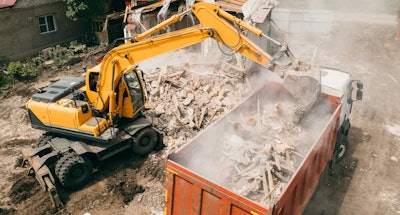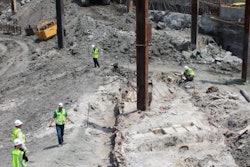
Construction is a significant contributor to the U.S. economy and one of the largest consumers of mining, manufacturing and various other industries. However, the construction industry, unfortunately, has become a substantial contributor to global waste, which poses a great danger to the environment if not managed or recycled properly.
Annual construction waste is expected to reach 2.2 billion tons globally by 2025. In a 2018 study, the Environmental Protection Agency (EPA) reported the U.S. generated over 600 million tons of construction-related waste. For this reason, construction industries need to find sustainable, suitable methods to manage construction and demolition materials.
In an ever-advancing industry like construction, landfill diversion can become a go-to strategy on most projects. As industry leaders, we must do our part to develop sustainable practices, uncover communal benefits and employ high-impact environmental initiatives like green construction. Below are three considerations to help evolve construction.
Rethink and Reduce Construction Waste
Construction sites are a hotbed for high-impact environmental initiatives. However, if not correctly handled, this waste can have severe ecological impacts with toxins leaching into the soil and contributing to the growing landfill space problem. Fortunately, most construction and demolition (C&D) waste can be recycled or repurposed. By practicing source reduction, salvaging, recycling, reusing existing materials, and selling used and recycled materials and products, leaders in construction can help divert C&D materials.
Source reduction prevents waste from being generated and reduces energy use, waste generation and life-cycle material use. Industry leaders should consider taking source reduction measures when possible, such as using preservation methods, employing alternative framing techniques, and designing new buildings that can easily adapt to future upgrades. In addition, construction leaders can work to be more precise with purchasing to prevent excess materials and the subsequent packaging waste from arriving at a construction site.
When employing environmentally-friendly initiatives, it is important to start a project with this goal in mind. Recovering used, but still-valuable materials, for further use is an effective way to conserve resources and save costs. If construction and demolition waste cannot be salvaged, companies should identify where building components can be recycled or sold. Concrete from demolition projects is easy to sell and it can be reused in an environmentally-friendly way, such as creating permeable outdoor pavers or the bed foundation for utility trenches. The road to C&D waste reduction begins with a plan, clear communication and expectations, and site management.
Benefit from Good C&D Waste Management
Aside from the various environmental benefits of good waste management, reducing the disposal of C&D materials creates jobs. EPA’s 2016 Recycling Economic Information (REI) Report showed C&D recycling created 175,000 jobs in one year alone, which translates to local business opportunities.
Reducing the amount of C&D materials disposed of in landfills can reduce building expenses through material purchase and disposal costs. Skanska’s Collin College - Wylie Campus is an excellent example of the holistic benefits of landfill diversion. We recycled 96% of the C&D debris through this project, or 5,257 tons, to local recycling facilities. Our conscious effort to reduce waste helps us continue to fulfill our commitment to green building practices and strengthens our relationship with our client. Companies that donate recovered materials to qualified 501(c)(3) charities can benefit from tax benefits.
Moreover, projects following sustainable building practices, such as LEED v4, could potentially gain company accreditation points. Through a concerted effort, builders can significantly impact projects and relationships with clients through more sustainable waste management.
Plan for Waste Management
Construction waste management encourages sustainable initiatives for recyclable materials in construction. The steps in construction waste management begin with storage and segregation, collection and transportation, recycling and reuse, and disposal. Companies adopting a waste management plan should know they do not have to start from scratch. Leaders can begin a construction waste management plan (CWMP) by evaluating their current waste management and find new innovative and creative ways to improve their waste management. Before construction begins, all parties should commit to achieving the highest level of waste diversion possible from day one.
Though each project is different, a comprehensive waste-reduction plan should outline site-specific issues and materials to be used. By using Building Information Modeling (BIM) intelligent software in the preconstruction phase, architects and engineers begin with a digital record of materials. BIM allows vital players in the construction process to collaborate, plan how to salvage materials, and forecast exact amounts needed to eliminate excess supply waste.
Construction waste management plans should contain clear messaging for all project team members, including subcontractors. Leaders should consider conducting project orientations to review the waste management plan with all parties on a jobsite, which includes where dumpsters are placed and how the material will be segregated or used. If the project uses an existing structure or it is a partial preservation, a more detailed waste management plan is necessary to ensure everyone is aware of the end goal with the C&D waste.
A clean future with reduced waste begins with engineers and construction companies promoting and engaging in sustainable and eco-friendly construction. Using intelligent tools like building information modeling, engaging preservation efforts, building with recycled materials and recycling can reduce the construction waste stream. Construction waste is no small task, but each company can collectively work to pave a more sustainable future for our communities.



















